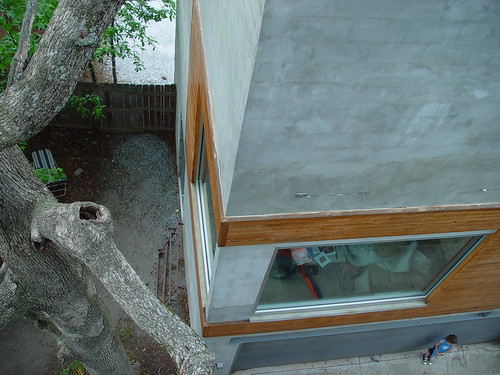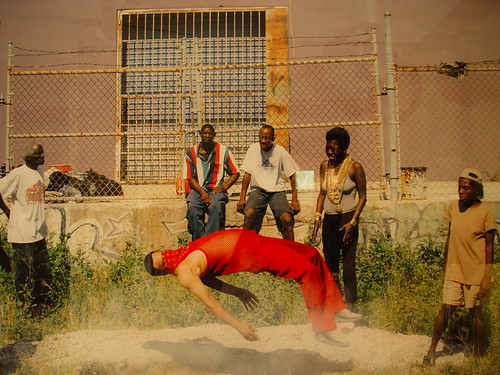Thursday, August 25, 2005
Theory 05 Reading Schedule:
Week One 8/22
Contemporary Architectural Theory; lectures by Professor Carpenter M/W
Week Two
Contemporary Architectural Theory; lectures by Professor Carpenter M/W
Read Frampton Chapter 1
Week Three 9/5 Labor Day Holiday 9/7 Lecture
Contemporary Architectural Theory; Summary
Read Curtis Chapter 1
Week Four
The International Style and Philip Johnson
Read Curtis Chapter 15 and The International Style
Ockman (NOTE: essay starting on) pp 137
Week Five
Organicism:Wright, Schindler, Neutra and Fay Jones
Read Curtis Chapter 5, 7;Ockman pp 31;Frampton Chapter 4
Week Six
Mies van der Rohe and the Bauhaus (Brueuer, Gropius, Albers and Itten)
Read Curtis Chapter 18,22
Ockman 163, 176;Frampton Chapter 6
Week Seven
Louis I. Kahn and Brutalism
Read Curtis Chapter 28
Ockman pp 240, 270, 27;Frampton Chapter 7
Week Eight
Alvar Aalto, Utzon and the Scandanavian School
Midterm Project due: 10/10 at 6pm
Read Curtis Chapter 25
Ockman pp 249;Frampton Chapter 8
Week Nine
Charles and Ray Eames
Read Ockman pp 260
Week Ten
Le Corbusier and the New York Five
Read Curtis Chapter 10,23,32
Ockman pp 64
Week Eleven
Carlo Scarpa
Frampton Chapter 9;Frampton Chapter 10
Week Twelve
Individual meetings: work on final projects
Week Thirteen and Fourteen
Work on Final Project
Final Project and Final Test
Test/Final project due: December 5 at 6pm
Wednesday, August 24, 2005
Architectural Theory I
The Questioning of Modernity
Professor William J. Carpenter FAIA PhD
wcarpent@spsu.edu
office 678-915-4280
home 404-377-6889
website: architecturaltheory.blogspot.com
School of Architecture, Construction and Civil Engineering Technology
Southern Polytechnic State University
ARCH 4115
Fall Semester 2005
Course Description
This course is based on presenting and understanding a survey of contemporary architectural culture. We will concentrate on The International Style, Modernism and Postmodernism.
Course Objective
The clear objective of to study the ideas of luminary architects to learn about their thought processes and to analyze the relationship of their writings, theories and built work.
Course Outcome
The course outcome to be able to analyze in-depth a contemporary architectural work and appreciate the theory underpinning it. This course will help prepare the designer to develop theories in their own work, which will culminate in their Thesis research.
Grade Calculation
Midterm Project 30%
Final Project 30%
Class Discussion and Quiz 40%
NAAB Criteria
1. Verbal and Writing Skills
3. Research Skills
4. Critical Thinking Skills
5. Human Diversity
36. The Context of Architecture
Texts:
Studies in Tectonic Culture, Frampton, K, MIT Press, 2000
The International Style, Johnson and Hitchcock, Dover, 1946
Modern Architecture since 1900, W. Curtis, Prentiss Hall, 1986
Nesbitt, K, Theorizing a new Agenda for Architecture, an Anthology of Architectural Theory 1965-1995, Princeton Architectural Press, New York, 1996
Architecture Culture 1943-1968, Ockman, J ,Columbia University, Rizzoli, 1993
Midterm Project
An analysis of a modern architect’s theory and the influences on his or her work. 20 pages illustrated with analysis and diagrams of the projects studied. Turn in word doc on a cd and 2 printed copies of the paper.
Outline:
1. Introduction
2. Biography
3. Influences
4. Analysis of three projects
5. Conclusions
Sample Topics:
Sullivan
Gropius
Wright
Lecorbusier
Schndler
Scarpa
Rohe
Aalto
Kahn
Johnson
Tange
Hassan Fathy
Stirling
Moore
Hejduk
Asplund
Eames
Chareau
Oud
Eileen Gray
Behrens
Breuer
Van Eyk
Albers
Itten
Rietveld
Final Project
This project is a research based intensive study on one project by the architect, which was studied at midterm. We will analyze the building, theory, relation to other projects in the architects oeuvre and key writings involved. Key concepts are; relations to site and context, program, relation of plan to section and material assemblies. 15 pages minimum
A Museum Quality Model of the project studied, two copies of paper and a CD with all files. The model shall express site, circulations, spatial conception and materiality of the project.
Schedule:
Week One 8/22
Contemporary Architectural Theory; lectures by Professor Carpenter M/W
Week Two
Contemporary Architectural Theory; lectures by Professor Carpenter M/W
Week Three 9/5 Labor Day Holiday 9/7 Lecture
Contemporary Architectural Theory; Summary
Week Four
The International Style and Philip Johnson
Week Five
Organicism:Wright, Schindler, Neutra and Fay Jones
Week Six
Mies van der Rohe and the Bauhaus (Brueuer, Gropius, Albers and Itten)
Week Seven
Louis I. Kahn and Brutalism
Week Eight
Alvar Aalto and the Scandanavian School
Midterm Project due: 10/10 at 6pm
Week Nine
Charles and Ray Eames
Week Ten
Le Corbusier and the New York Five
Week Eleven
Carlo Scarpa
Week Twelve
Individual meetings: work on final projects
Week Thirteen and Fourteen
Work on Final Project
Final Project and Final Test
Test/Final project due: December 5 at 6pm
Introduction
In the visual arts, the term “post-modern” may have gained currency first among architects and critics persuaded that International Style modernism had failed to achieve the utopian or humanist ideals pronounced by LeCorbusier and Mies van der Rohe: indeed it had seemed actually to have grown brutal and inhumane, once co-opted by government as well as private developers eager to exploit reductive aesthetics for the ruthlessly pragmatic purpose of giving less while charging, or paying, more for it.
Simultaneously, they also found their efforts to counter modernist unity with postmodern plurality reinforced by similar impulses in many other areas of inquiry and practice-ecology, psycholinguistics, neural networks and so forth. However it was semiotics that yielded the surest theoretical underpinning, relative to the other arts. If signs and symbols, like words and language, signify solely though their opposition to one another, then in architecture of multiple cods or signifiers stand to generate far more meaning than the single, purified code (or concept)—the bare bones functionalism—characteristic of the International Style.
Portland Building
ATT
Piazza d’ Italia
Graves Disney
So therefore Postmodernism was about Pluralism as opposed to monism, complexity, double coding and language. In many ways it related to the baroque. Concepts emphasized were Historical continuity, urban typology, contextualism and metaphor.
Deconstruction
By 1987, post-modernism architecture appeared to have climaxed in a new-conservative process of easy, even empty and indiscrimate quotation from traditional prototypes. As the global economy boomed during the Reagan/Thatcher era, fueling wildly speculative construction of commercial real-estate, the industrialized world found itself treated to a proliferation of glass and steel office buildings masquerading as Gothic cathedrals, discount stores decked out as pagoda, and drugstores embellished with Classical orders
“The past began to seem not like a source for modern government, but more like a warm bath in which we would wallow” Paul Goldberger
Deconstruction was related with a kinship to the semiotic theory and critical practice articulated by France’s Jacques Derrida, deconstruction holds cultural products, like elements of language with an emphasis on differences. Words like decentered, dispersed, intertextual and referents were linked to signs and signifiers. The inherent disorder in the world was linked to architecture. Concepts such as stability, harmony and security were avoided in favor of architecture of instability, disharmony and insecurity. Key architects of this movement were Bernard Tschumi and Peter Eisenman.
“La Vilette, then, aims at an architecture that means nothing, an architecture of the signifier rather than the signified—on that is pure trace or pure language. In the Nietzchean manner, La Villette moves towards interpretive infinity, for the effect of refusing fixity is not insignificance, but semantic plurality. “
A connection was established to the Russian Avante Garde—malevich, Tatlin and Redechencko
The will was to collapse history
Derrida On Grammatology
1. Difference—A phantom, which exceed the boundaries of language. It is not a word or a concept it is a koan or puzzle.
a. A system of spacing
b. A deferral process—to postpone
c. A sense of differing or disagreeing
2. Hierarchy reversal this was an attack on western metaphysics and the notion of truth, here we have the reversal of notions like gravity and the reversal of served and servant space.
3. Marginality and centrality—This has to do with the limits and edges such as in the frame of a painting
4. Iterability and meaning—this has to do with the notion of layered ideas, relation exists between the physical social and historical context
Here we are speaking about levels of meaning in architecture
Parc la Villete
Eisenman Wexner Center
Hadid –Vitra
Gehry Bilbao
Koolhaas
Libeskind
Morphosis
Coop Himmelblau
Friday, August 19, 2005
Welcome to Blogger!
Since you're new to Blogger, we've put together this short list to help get you started:
Hello, Photoblogging! Post pictures to your blog
Profiles: It's all about you
Post from any telephone: On the Road with Audioblogger
Email to your blog: use Blogger Mobile or Mail-to-Blogger to post from your email program or web-enabled phone.
Non-English speakers: post in your language
Team blogs: Make it a group effort
More templates: choose from our array of gorgeous, professionally-designed site templates
FTP your blog: if you already have an existing web site, publish your blog to it via ftp
Beyond Blogging: check in each week for the latest Blogger news and features
A blog is a web page made up of usually short, frequently updated posts that are arranged chronologically — like a what's new page or a journal. The content and purposes of blogs varies greatly — from links and commentary about other web sites, to news about a company/person/idea, to diaries, photos, poetry, mini-essays, project updates, even fiction.
Blog posts are like instant messages to the web.
Many blogs are personal, "what's on my mind" type musings. Others are collaborative efforts based on a specific topic or area of mutual interest. Some blogs are for play. Some are for work. Some are both.
Blogs are also excellent team/department/company/family communication tools. They help small groups communicate in a way that is simpler and easier to follow than email or discussion forums. Use a private blog on an intranet to allow team members to post related links, files, quotes, or commentary. Set up a family blog where relatives can share personal news. A blog can help keep everyone in the loop, promote cohesiveness and group culture, and provide an informal "voice" of a project or department to outsiders.
Thursday, August 18, 2005
TERMS DEFINED
civic engagement:
social and educational exchange between members of society
Charrette: an intense and concentrated collaborative design session utilising community input to define the goals of a community design project
community: a group of people who are socially interdependent, who participate together in discussion and decision-making, and who share certain practices that define the community
community design centre (CDC):
a non-profit organisation that enables communities to increase their influence, control, ownership and management of community design and development activities.
design-build (DB):
There are two distinct definitions for design-build, one in Practice and one in Academia. It is important to differentiate between the two:
Academia
DB in Architectural Education is defined as the interrelation of conceptual ideas with project fabrication assembly. During this process, ideas are revealed through the process of making. DB is sometimes performed through team efforts or individual exploration depending on the lead professor’s project interest and learning objectives.
Practice
DB in Architectural Practice is defined as a contractual relationship between an owner and an entity that offers both design and construction services, which often saves the owner money and produces completed buildings at a faster pace than the typical architect/contractor paradigm.
design-build studio (DBS):
A university course in which students build selected designs, typically for a community. Collaboration, conflict resolution, finance management and communication with clients are common and necessary elements of these courses. (Emerged in North America in the 1970s and are presently active)
live project (LP):
A university course that incorporates actual practice-based methods into an educational environment for clear learning outcomes. (Prevalent in Great Britain in the 1960s and 70s)
service: an act of benefit to society or a specific community
service learning:
courses and studios that provide an enriched educational experience for students through community-based projects




